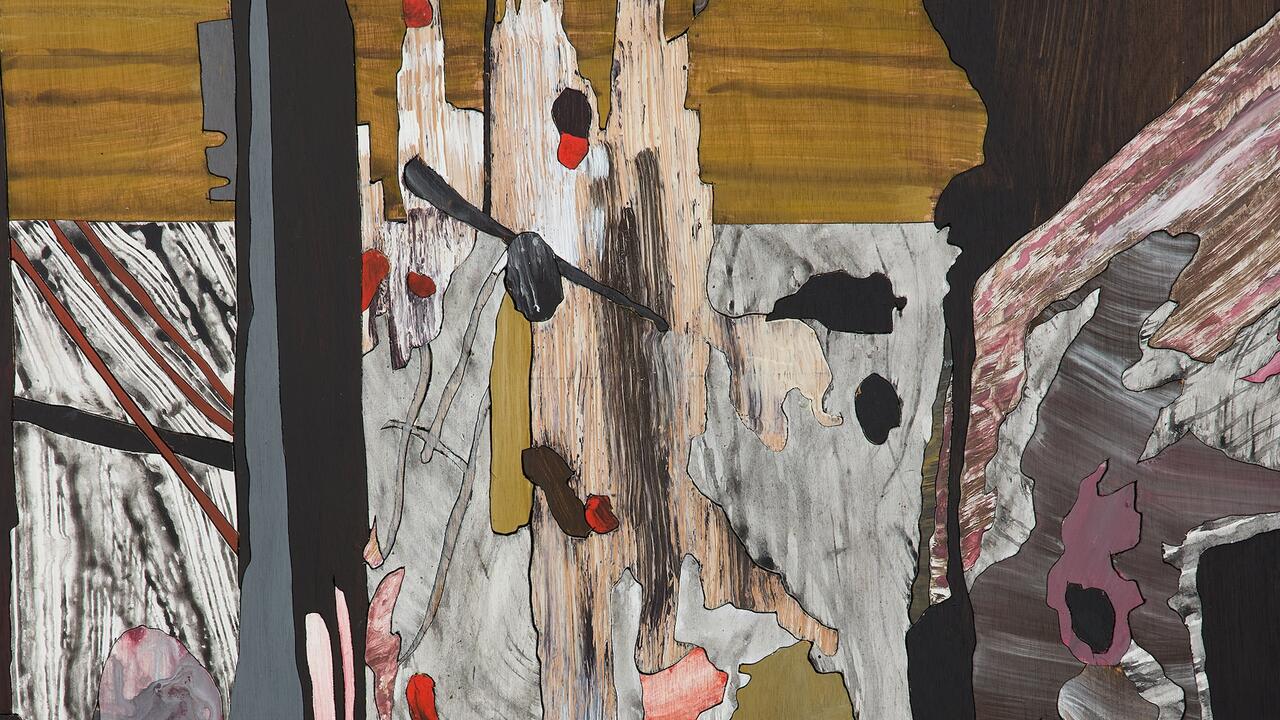David Burrows
fa projects, London, UK
fa projects, London, UK

Your favourite book says a lot about your preoccupations. David Burrows' choice is the copy of Martin Heidegger's Being and Time (1927) found clutched in Roland Barthes' lifeless hand after his fatal collision with a laundry van. Burrows hasn't read it - or at least not that particular copy, but it's a good indication of the things buzzing about his head. Ontological issues probably get him thinking, along with accident scenes, pools of blood and discarded clothes. I suspect he's got a slightly morbid sense of humour, and made a joke about 'The Death of the Author' the first time he heard about the circumstances of Barthes' demise. Although Burrows' response doesn't really answer the question, it's an appealing failure, brainy and full of colour. I'm not sure he's that interested in answers anyway, preferring liquid queries to anything you could hold in your hand and call a
conclusion.
With Burrows' work, the viewer always arrives a little too late. We walk in on the abandoned debris of a party, the set of a kids' TV show after the credits have rolled or the grisly aftermath of an ordinary catastrophe. Our instinct is to reconstruct a cogent then from the messy now, to try to put Humpty together again. Snowy Landscape with Wreckage (2001) includes puddles which look like a fistful of melted crayons on the gallery floor. Swatches of grassy polyethylene peek through white snowy drifts, the crime-scene of winter evaporating before our eyes. Items of clothes are strewn across this thawing parkland: a beetle-crusher shoe, an eye-patch, a child's panties, a training-bra. There's a torn-off sleeve and a neatly shredded pair of Evisu jeans; both cut from the same foamy cloth as the turf and snowfall. A flip-flop - the only item here that should be made from polyethylene - has tiny, cake-slice incisions in the toes, the missing fragments littering the grass like bijou fondant fancies. Impossible blood-flower splats rise from the green shoots. Defying time and materials, they recall the perfect crown-shape formed by a droplet of milk as it hits a hard surface.
What caused this violent, pop-coloured collision? What's happened here? Not much, or at least only art. There never was a disaster, just its fabricated fallout, and if we're detectives at the scene we're here to practice cultural forensics. We start to think about innocence and horror, about the inherent barminess of rendering a mish-mash of objects and textures in a single medium. Burrows makes us examine the framing of aesthetic experience, asking the difference between a mess and a mess that looks good. The answer's pretty open-ended - we're all curators of our own untidiness - but Snowy Landscape with Wreckage puts the question beautifully.
Accidents have a certain pedigree in 20th century art, reaching back past Andy Warhol's Saturday Disaster (1964) and Jackson Pollock's cultivated drips to Jean Arp's clouds of torn paper, tossed up and glued down where they fell. This family tree sprouts in Lavender Blue Roller-blade Disaster (2001), a photographic diptych that snaps its shutter at another artificial aftermath. On a white tiled floor that's half-canvas, half-Modernist grid lies a bunch of discarded rollerblades. Looking at the gloopy McDonalds detritus that litters the scene - all Claes Oldenburg burgers and shocking pink milkshakes - made me think of 1950s diners, with skating waitresses zooming towards a sticky end. As in Pollock's Lavender Mist Number 1 (1950) trails of pigment loop in and out of each other, hiding their precision behind a mendacious messiness. Peering closer, it becomes apparent that the two halves of the diptych explore the same scene from slightly different camera angles, like the subtle shifts in perspective found in Warhol's juddering silk-screens. It's not rollerbladers who've collided here, but episodes from the history of Modernism. It's difficult to reconstruct these past masters from Burrows' work, hard to imagine they add up to more than cursory stylistic tics. The photo makes them as bland and standardised as fast food - something to be consumed unthinkingly before tossing the wrapper away to land in some random, Arpian spot.
Maybe the piece is about the commodification of culture, but I think it's got more to do with the aesthetics of failure. It fails to document something real while playing second-string to the installation it records; it doesn't come to grips with the bigwigs it references but somehow, against all the self-imposed odds, it's a compelling picture of the messy business of trying to make good art. I left the gallery thinking of Marcel Duchamp's In Advance of a Broken Arm (1915). The best accidents are the ones you know are going to happen.























